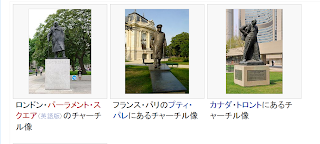This was the day, those 70 years ago this week, when the British army, still at war with Germany, opened fire upon – and gave locals who had collaborated with the Nazis the guns to fire upon – a civilian crowd demonstrating in support of the partisans with whom Britain had been allied for three years.
Britain’s logic was brutal and perfidious: Prime minister Winston Churchill considered the influence of the Communist Party within the resistance movement he had backed throughout the war – the National Liberation Front, EAM – to have grown stronger than he had calculated, sufficient to jeopardise his plan to return the Greek king to power and keep Communism at bay. So he switched allegiances to back the supporters of Hitler against his own erstwhile allies.
And thereafter Greece’s descent into catastrophic civil war: a cruel and bloody episode in British as well as Greek history which every Greek knows to their core – differently, depending on which side they were on – but which remains curiously untold in Britain, perhaps out of shame, maybe the arrogance of a lack of interest.
In Greece, you found yourself fighting – or imprisoned and tortured by – the people who had collaborated with the Nazis, on British orders.
Manolis Glezos was sick that morning, suffering from tuberculosis. “But when I heard what had happened, I got off my sick bed,” he recalls. The following day, Glezos was roaming the streets, angry and determined, disarming police stations. By the time the British sent in an armoured division he and his comrades were waiting.
“I note the fact,” he says, “that they would rather use those troops to fight our population than German Nazis!” By the time British tanks rolled in from the port of Pireaus, he was lying in wait: “I remember them coming up the Sacred Way. We were dug in a trench. I took out three tanks,” he says. “There was much bloodshed, a lot of fighting, I lost many very good friends. It was difficult to strike at an Englishman, difficult to kill a British soldier – they had been our allies. But now they were trying to destroy the popular will, and had declared war on our people”.
The German tanks had been replaced by British ones, the SS and Gestapo officers by British soldiers.” The house belonging to actor Mimis Fotopoulos, she writes, was burned out with a portrait of Churchill above the fireplace.
At the end of the Dekemvriana, thousands had been killed; 12,000 leftists rounded up and sent to camps in the Middle East.
Patríkios was among the relatively fortunate; thousands of others were executed, usually in public, their severed heads or hanging bodies routinely displayed in public squares. His Majesty’s embassy in Athens commented by saying the exhibition of severed heads “is a regular custom in this country which cannot be judged by western European standards”.
The name of the man in command of the “British Police Mission” to Greece is little known. Sir Charles Wickham had been assigned by Churchill to oversee the new Greek security forces – in effect, to recruit the collaborators
“It’s the narrative of empire,” says Coogan, “and, of course, they applied it to Greece. That same combination of concentration camps, putting the murder gangs in uniform, and calling it the police. That’s colonialism, that’s how it works. You use whatever means are necessary, one of which is terror and collusion with terrorists. It works.
Gerolymatos adds: “The British – and that means Wickham – knew who these people were. And that’s what makes it so frightening. They were the people who had been in the torture chambers during occupation, pulling out the fingernails and applying thumbscrews.” By September 1947, the year the Communist Party was outlawed, 19,620 leftists were held in Greek camps and prisons, 12,000 of them in Makronissos, with a further 39,948 exiled internally or in British camps across the Middle East. There exist many terrifying accounts of torture, murder and sadism in the Greek concentration camps – one of the outrageous atrocities in postwar Europe. Polymeris Volgis of New York University describes how a system of repentance was introduced as though by a “latter-day secular Inquisition”, with confessions extracted through “endless and violent degradation”.
これは、ひどい!
そして、こんなことを”先進国”では、、歴史で教えていないわけですねえーーーへえええええええ、そうなんだあああ、センシンコクでは教えないんだ、自国のした悪行三昧を・・・・おしえないんだあああ。
チャーチルは英国の東条ともいうべきで、戦争犯罪人ともいうべき人物の
 http://ja.wikipedia.org/wiki/%E3%82%A6%E3%82%A3%E3%83%B3%E3%82%B9%E3%83%88%E3%83%B3%E3%83%BB%E3%83%81%E3%83%A3%E3%83%BC%E3%83%81%E3%83%AB
http://ja.wikipedia.org/wiki/%E3%82%A6%E3%82%A3%E3%83%B3%E3%82%B9%E3%83%88%E3%83%B3%E3%83%BB%E3%83%81%E3%83%A3%E3%83%BC%E3%83%81%E3%83%AB こんな銅像ははやいところとっぱらうような記事を書くのが英米メディアとしてはスジでしょうね。
(歴史問題)











